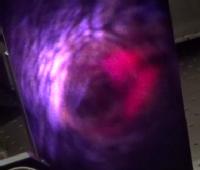News and Events
Nobel Prize Colloquium : Intense Laser Beams
 On 24th October a special Departmental Colloquium in the Physics Department commemorated the recent 2018 Nobel Prize in Physics awarded to Arthur Ashkin, Gerard Mourou and Donna Sutherland. The prize celebrated the trios' "groundbreaking inventions in the field of laser physics”. Dr Gavin Morley spoke about the invention of optical tweezers, and their widespread adoption and use today. Dr James Lloyd-Hughes described the discovery and principles of chirped-pulse amplification, which is now used worldwide to create incredibly intense laser pulses for laser machining (micromachining and laser eye surgery) and scientific applications.
On 24th October a special Departmental Colloquium in the Physics Department commemorated the recent 2018 Nobel Prize in Physics awarded to Arthur Ashkin, Gerard Mourou and Donna Sutherland. The prize celebrated the trios' "groundbreaking inventions in the field of laser physics”. Dr Gavin Morley spoke about the invention of optical tweezers, and their widespread adoption and use today. Dr James Lloyd-Hughes described the discovery and principles of chirped-pulse amplification, which is now used worldwide to create incredibly intense laser pulses for laser machining (micromachining and laser eye surgery) and scientific applications.
Chirped pulse amplification is the technique used in WCUS to produce our amplified laser pulses, which we use to perform ultrafast spectroscopy across the electromagnetic spectrum. As an example of the extreme intensity now routinely available, this video shows the focussed laser beam output producing a plasma (white ball, bottom right). The "buzz" on the video is the sound of the laser creating a mini explosion 1000 times per second. In addition to glowing, the plasma acts as a non-linear source of light, hence the blue/white/red glow on the top left. Thanks to Dr Mick Staniforth & Connor Mosley for the video.
